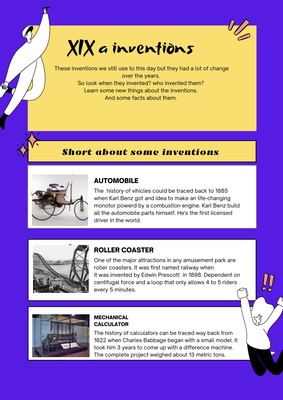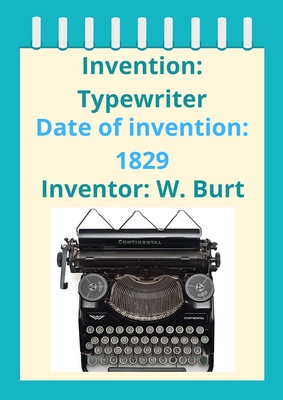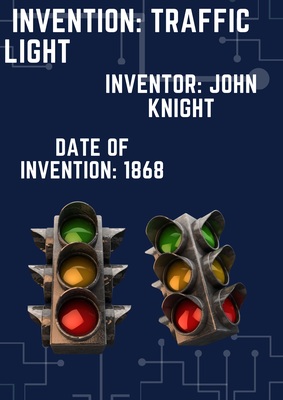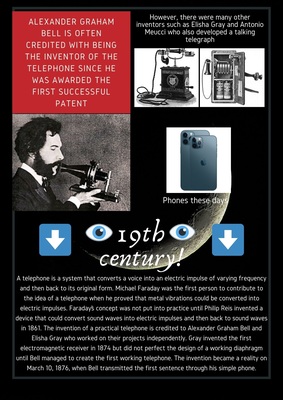.CLIL - HISTORY lesson plans
HISTORY CLIL LESSONS 1
January 2020
Agrupamento de Escolas do Barreiro
PT - History Lesson.docx
History CLIL lesson LT.docx
CLIL Lesson Plan
School: Vilniaus Sausio 13-osios progimnazija. Lithuania
Age of students/Grade: 11 years old /5th grade
Level of English: A1
Teacher(s): Žana Šunina
Subject(s): English / History
Topic: Queens of England
Aims:
Teaching points:
| Language | Content |
- To be beheaded
- Throne
- Sewing
- To shoot a bow and arrow
- Pale
- Jewellery
- Follower
- Reign
- Scholar
- Coronation
- Duke
| - Biography of Queen Elizabeth I
- Biography of Queen Elizabeth II
- Biography of Queen Victoria
|
Resources: video projector, laptop, speakers
Description of the activities:
Activity 1: To introduce the topic and new vocabulary
- T directs Ss to the pictures and asks questions. Ss look at the pictures, answer the questions.
- T explains/elicits the meanings of any unknown words.
Activity 2: To present and practise Roman numerals
- T explains the Roman numerals 1-10.
- Ss write numerals 11-20 in their notebooks. T checks Ss’ answers on the board.
Activity 3: To listen for specific information
Activity 4: To consolidate information in the texts
- Ss read the article.
- Ss read sentences and put ‘’I’’ for Elizabeth I and ‘’II’’ for Elizabeth II (ANNEX 1).
- In pairs, Ss read the royal quiz and choose the correct alternative (ANNEX 2).
Activity 5: To develop research skills; to give a presentation on biography of Queen Victoria
- T explains to students that they have to find information about Queen Victoria. T points out that Ss may collect data through the Internet, encyclopaedias and other published sources.
- Ss use this information to do PowerPoint presentations about Queen Victoria. Ss do this task at home.
- Ss present their homework the next lesson.
Supplementary materials:
“Welcome 3” – textbook for the 5th grade, Express Publishing, pages 106-107.
ANNEX 1
Read and put I for Elizabeth I or II for Elizabeth II.
- She was born in Greenwich Palace.
- Her father was King Henry VIII.
- She married Philip Mountbatten.
- She became Queen of England in 1952.
- She loved shooting a bow and arrow.
- She had lessons at home with her sister, Princess Margaret.
- She named her first son Charles.
- She lived at the same time as William Shakespeare.
Answers:
1-I; 2-I; 3-II; 4-II; 5-I; 6-II; 7-II; 8-I.
ANNEX 2
Royal Quiz
Work with a partner. Try to guess the correct answer.
1. Who is Prince Charles’ eldest son?
- Prince Andrew
- Prince William
- Prince Henry
2. What is Prince Andrew’s title?
- Duke of York
- Prince of Wales
- Sir Andrew
3. Who’s the Duke of Edinburgh?
- Prince Edward
- Prince Charles
- Prince Philip
4. Who did Prince Charles marry?
- Lady Diana Spencer
- Lady Jane Grey
- Sarah Ferguson
5. Where is Buckingham Palace?
- London
- Edinburgh
- Cardiff
6. What is one of Prince Charles’ favourite hobbies?
- Bowling
- Dancing
- Gardening
7. When was the Queen Mother born?
- 1926
- 1952
- 1900
8. Where does the Queen spend her summer holidays?
- Windsor Castle
- Balmoral Castle
- Edinburgh Castle
9. When you speak to the Queen, you must call her…
- Mrs Windsor
- Your Majesty
- Madam Elizabeth
10. Where can you see the Crown Jewels?
- Big Ben
- St Paul’s Cathedral
- The Tower of London
Answers:
1-B; 2-A; 3-C; 4-A; 5-A; 6-C; 7-C; 8-B; 9-B; 10-C.
CLIL Lesson Plan
History
CLIL history RO.docx
School: Liceul Tehnologic Octavian Goga Jibou
Age of students/Grade: 11 years old /5th grade
Level of English: A1
Teacher(s): Nagy Melinda
Subject(s): English / History
Topic: The Tudors
Aims:
- Identify and understand the similarities and differences between Tudor and modern-day.
- Understand that Tudor society had a strict hierarchy.
- Research and learn about kings and queens in history
Teaching points:
| Language | Content |
| Ruler Kingdom Sovereign War King Queen | The Tudor Dinasty War of Roses Protestants vs. Catholics |
Resources: laptop, videoprojector, speakers, tablets
Description of the activities:
Activity 1: watching a video about children’s life in the Age of Tudors (1485-1603). Stating similarities and differences.
Activity 2: Reading & Comprehension – (War of Roses & The Tudor rulers) – answering questions
1. What is the name of the dynasty ruling England between 1485 and 1603?
2. Who is the third Tudor king?
3. What is Henry VIII known for?
4. Who is called Bloody Mary and why?
5. Who are the two opponents in the Wars of the Roses?
Activity 3 – Digital poster creation
Imagine you have a time machine that takes you to your favorite past age, under the rule of a historical figure you admire. Use pictures and write a few lines mentioning his / her name, ruling period and why he / she is famous.
Supplementary material:
Textbook for the 5th grade:
https://manuale.edu.ro/manuale/Clasa%20a%20V-a/Limba%20moderna%20engleza/Booklet/
HISTORY CLIL LESSONS 2
APRIL 2020
Liceul Tehnologic Octavian Goga Jibou, Romania
HISTORY CLIL LESSONS RO_2.docx
School: Liceul Tehnologic Octavian Goga Jibou
Age of students/Grade: 11 years old /5th grade
Level of English: A1
Teacher(s): Nagy Melinda
Subject(s): English / History
Topic: The British Empire and Slavery
Aims:
By the end of this enquiry pupils should:
- be able to use accurately and explain the terms empire, colony, colonist, ‘mother country’, conquest
- give reasons why the slave trade was important to Britain
Teaching points:
| Language | Content |
- empire
- colony
- colonist
- conquest
- slave trade
- peak
- guns
- campaign
- abolition
| - The Expansion of the British Empire
- Slave trade of the British Empire
- Slavery Abolition Act In Great Britain
|
Resources: laptop/smartphone/tablet, internet connection, Zoom App, online textbook
Description of the activities:
Activity 1: Students read the text and label the diagram with the steps of the slave trade
Activity 2: Students read the text for specific details and answer the questions
Activity 3: Writing
Imagine you are a slave involved in the slave trade and you managed to return home. Write a letter (50–70 words) to a friend telling him / her how you spent this long period, following the points below.
- you arrived in the West Indies three months ago, on a British ship;
- the journey was very long and the conditions were very bad;
- the ship from Liverpool sailed to Africa where the slave traders loaded many slaves;
- you arrived in the West Indies, but lots of slaves died in the journey;
- you worked hard every day on the sugar and tobacco plantations.
https://manuale.edu.ro/manuale/Clasa%20a%20VI-a/Limba%20moderna%20engleza/U0MgQVJUIEtMRVRUIFNS/#book/u10-2-128-129
CLIL Lesson Plan
History CLIL lesson LT (2).docx
School: Vilniaus Sausio 13-osios progimnazija. Lithuania
Age of students/Grade: 11 years old /5th grade
Level of English: A1
Teacher(s): Žana Šunina
Subject(s): English / History
Topic: King Arthur: A British Legend.
Aims:
Teaching points:
| Language | Content |
- Wizard
- Castle
- Enemy
- Battle
- To rescue
- Knight
- Sword
| |
Resources: computers/laptops/tablets/mobile phones, Zoom app, internet connection.
Description of the activities:
Activity 1: To introduce the topic and new vocabulary
- T directs Ss to the pictures and names (Arthur, Merlin, Sir Lancelot, Guinevere) and asks questions: “Who was a king? Who was a knight? Who was a wizard? Who was a princess?’’ Ss look at the picture and names, answer the questions.
- T explains/elicits the meanings of any unknown words.
Activity 2: To listen for specific information
Activity 3: To consolidate information in the texts
- Ss read the legend.
- Ss correct sentences (ANNEX 2).
Activity 4: To consolidate new vocabulary.
- Ss find the words in the text which mean the same as the words given (ANNEX 3).
- T checks Ss’ answers.
Activity 5: To develop research and IT skills.
- T explains to students that they have to find information about King Arthur to complete sentences. T points out that Ss should use the Internet to find the answers (ANNEX 4).
- Ss do this task as homework.
- Ss present their homework the next lesson.
Supplementary materials:
“Welcome to the UK” – CLIL readers, Express Publishing, pages 20-23, 40-41.
“Welcome 3” – textbook for the 5th grade, Express Publishing, pages 114-115.
ANNEX 1
Choose the corect answer:
1. Excalibur was a ... .
a) beautiful sword, b) Round Table
2. Guinevere was Arthur’s ... .
a) daughter, b) wife
3. Arthur’s favourite knight was ... .
a) Sir Lancelot, b) Sir Galahad
4. ... killed Arthur.
a) Merlin, b) Mordred
Answers: 1-a; 2-b; 3-a; 4-b.
ANNEX 2
Read the text and correct the sentences.
King Arthur: A British Legend
The story of King Arthur and the knights of the Roung Table is probably one of the Britain’s most famous legends. No one knows if the story is true. Some pepole believe that King Arthur lived in Britain hundreds of years ago.
The Lady of the Lake gave Arthur’s father his famous sword, Excallibur. It was a beautiful sword, covered with jewels. Excallibur was the best sword in the world. The legend says that Arthur became King after pulling the sword out of the stone. He became a brave and well-loved King, helped by Merlin, a wizard who could perform magic.
Arthur lived in a castle called Camelot. He fell in love with Princess Guinevere. She was the daughter of the King Leodegrance and she was very beautiful and clever. Guinevere became Arthur’s wife. As a wedding present, King Leodegrance gave Arthur the Round Table. The table was huge; it could seat a hundred knights. The legs were thick and carved with birds, animals, leaves and flowers. Around the table there were beautiful golden seats with the names of each knight on the back. Arthur’s favourite knight was Sir Lancelot. Sir Lancelot’s son, Sir Galahad, was the bravest knight in the world.
Arthur’s enemies were his half-sister and Mondred, her son. After many battles, it was Mondred who finally killed Arthur. Before Arthur dies, he asked one of his knights to throw Excallibur back into the lake. As the knight threw the sword, a hand came up from the lake to catch it.
The lady of the Lake took Arthur away to the Isle of Avalon. Some people say that he didn’t die! They say he is sleeping in a cave until Britain needs hom again to rescue its people from danger.
1. Arthur became King after pulling the sword out the lake (the correct answer is the stone).
2. Arthur’s castle was called Galahad (the correct answer is Camelot).
3. The Round Table was a birthday present from King Leodegrance (the correct answer is wedding).
4. Arthur’s favourite knight was Sir Mordred (the correct answer is Lancelot).
5. The Lady of the Lake took Arthur away to the Isle of Wight (the correct answer is Avalon).
ANNEX 3
Read the text again and find the words which mean the following:
1. a soldier on a horse (knight);
2. a famous old story (legend);
3. rock (stone);
4. not afraid of dangerous things (brave);
5. a man who can perform magic (wizard);
6. a large strong building (castle);
7. gift (present);
8. not friends (enemies);
9. fights (battles);
10. save (rescue).
ANNEX 4
Complete the sentences. Use the Internet to help you.
1. King Arthur was also known as ... .
2. King Arthur was the son of ... .
3. King Arthur’s half-sister was called ... .
4. Arthur’s wounds were treated by ... .
5. King Arthur was killed in ... .
Answers: 1. ‘’The One, True King of the Britons’’; 2. King Uther and Queen Igraine; 3. Morgan le Fay; 4. Three mysterious women; 5. The Battle of Camlann.
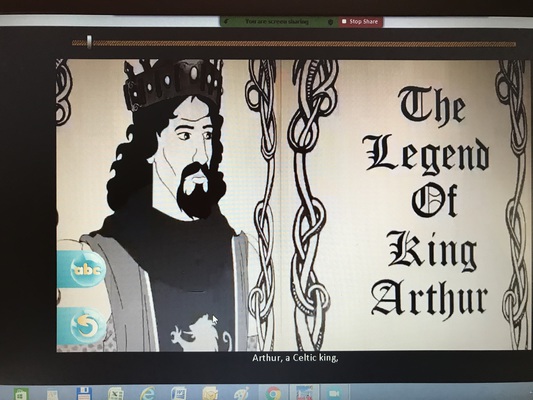
HISTORY CLIL LESSON 3
NOVEMBER 2020
School: Vilniaus Sausio 13-osios progimnazija, Lithuania
History CLIL LT (3).docx
Castles in Lithuania.pptx
Age of students/Grade: 11-12 years old /5th grade
Level of English: A1
Teacher(s): Žana Šunina
Subject(s): English / History
Topic: The Legend of Vilnius
Aims:
Teaching points:
| Language | Content |
- Iron
- Howl
- Wise man
- Vivid
- Dream
- Castle
- Valley
- Chase
- Auroch
- Greatness
- Duke
- Overwhelmed
| - The Legend of Vilnius
- Gediminas’ Castle
- Castles in Lithuania
|
Resources: video projector, laptop, speakers, handouts of the text
Description of the activities:
Activity 1: To introduce the topic through pictures
answer the questions: What is the capital of Lithuania? When was Vilnius found?
What do you know about Grand Duke Gediminas?
Activity 2: To read for detailed understanding
Activity 3: To develop research skills
Supplementary materials:
https://en.wikipedia.org/wiki/Vilnius
https://www.youtube.com/watch?v=drRbW1f11F8
https://www.youtube.com/watch?v=XUjuN5xSsm8
https://www.govilnius.lt/visit-vilnius/routes/your-love-story-in-vilnius/gediminas-tower
ANNEX 1
Read the text. Put the paragraphs in the correct order.
The Legend of Vilnius
A
In his dream, Gediminas saw a huge iron wolf standing on the hill. That wolf was howling with a powerful voice which sounded as if hundreds of wolves were trapped inside it. In the morning, concerned Grand Duke Gediminas went to his priest Lizdeika and asked for advice.
B
Grand Duke Gediminas immediately sent his men to Šventaragis valley and ordered them to start building the castles. He then named the newly-created city, Vilnius, and made it the new capital of Lithuania. Today, thousands of people visit Gediminas Castle, which stands on the exact hill which Grand Duke Gediminas dreamt of, and spread the word of Vilnius’ greatness!
C
Trakai, one of the most stunning cities in the Baltic States, was the capital of Lithuania and the home of Grand Duke Gediminas in the 14th-century. One day, Gediminas went on a hunting trip about 20 kilometers away from Trakai. To everyone’s fortune, the trip was successful and Gediminas killed aurochs, the biggest animal in Lithuania. Overwhelmed with joy, Gediminas decided not to come back to Trakai that night and camp in the woods, at Šventaragis valley. That is when he dreamed a very strange but extremely vivid dream.
D
Lizdeika, the wisest man in the whole country, explained to Gediminas that the iron wolf on the hill symbolized a great capital which will stand right in that place. Lizdeika also assured Gediminas that the powerful howl of the wolf meant that the whole world will know about the greatness of that capital one day.
Answers:
1-C; 2-A; 3-D; 4-B.
Liceul Tehnologic Octavian Goga Jibou, Romania
History CLIL 3 RO.docx
Age of students/Grade: 12 years old /6th grade
Level of English: A1-A2
Teacher(s): Melinda Nagy
Subject(s): English / History
Topic: Thanksgiving – How it All Started
Aims:
-to enable students to talk about celebrations
-to describe customs and traditions
-to learn about the origins of Thansgiving
Teaching points
| Language | Content |
| Thanksgiving Pilgrims Native Americans journey strong winds reach harvest governor announce declare | Celebrations in Uk and USA Celebrations in Romania Thanskgiving |
Resources: internet connection, laptop/tablet/smarphone, Google Meet, online textbook
Description of the activities:
Activity 1: - whole class discussion
-talking about ways of celebrating New Year, Valentine’s Day, Easter, April’s Fools Day, May Day, Mother’s Day, Father’s Day, Christmas
Activity 2: - Reading
-reading the text “Thanksgiving, how it all started”
Activity 3: - reading for specific information
-multiple choice exercise based on the text
Activity 4: -discussion
-Which is your favourite celebration from your country?
Textbook: - pages 128-129
https://manuale.edu.ro/manuale/Clasa%20a%20VI-a/Limba%20moderna%20engleza/UNISCANGRUPEDUCA%C8%9AIONAL1/
HISTORY CLIL LESSONS 4
February 2021
Vilniaus Sausio 13-osios progimnazija, Lithuania
History CLIL LT 4.docx
Age of students/Grade: 12-13 years old /6th grade
Level of English: A1/A2
Teachers: Žana Šunina, Ieva Kildušytė
Subject(s): English / History
Topic: Monuments
Aims:
- To present new vocabulary through pictures
- To read for specific information
- To consolidate information in the text
- To prepare a poster
Teaching points:
| Language | Content |
- Monument
- Special
- Event
- Narrow
- Honour
- Structure
- Passageway
- Royal family
- Statue
- Military Hero
- Empire
| - Monuments around the World
- Monuments in Lithuania
|
Resources: computers/laptops/tablets/mobile phones, Zoom app, internet connection.
Description of the activities:
Activity 1: To present new vocabulary through pictures.
- T directs Ss to the pictures (ANNEX 1).
- T asks Ss to describe each monument.
Activity 2: To read for specific information
Activity 3: To consolidate information in the text.
- T elicits three things Ss remember from the text from variuos Ss around the class.
Activity 4: To prepare a poster.
- T gives Ss time to collect pictures and information about monuments in Lithuania from the Internet.
- Ss prepare a poster.
- T asks Ss to present their posters to the class.
Supplementary materials:
“Upstream Elementary A1/A2” – Student’s book, Express Publishing, page 86.
ANNEX 1
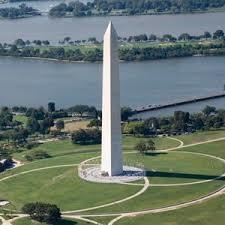
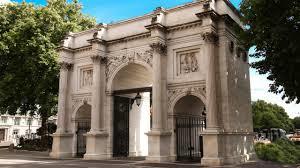
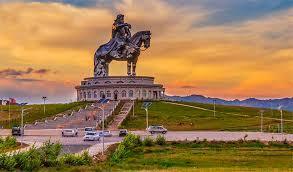
ANNEX 2
Our World of Monuments
People usually build monuments to remember a famous person or a special event. There are different types of monuments around the world.
A Obelisks
An obelisk looks like a tall narrow pyramid. One famous obelisk is the Washington monument in Washington, D.C. It honours George Washington, the first president of the USA. It has 897 steps inside it and visitors can also go up the monument in a lift.
B Triumphal Arches
A triumphical arch is a large structure that has a passageway that goes through it. Marble Arch in London was in front of Buckingham Palace in 1851. Only members of the royal family could pass through it. In 1851 they moved it to the northeast corner of the Hyde park.
C Equestrian Statues
An equestrian statue is a statue with a person on a horse. Most of them honour military heroes. One such statue is the Genghis Khan Statue in Mongolia. Genghis Khan ruled a large empire in the 12th century. The statue is in the countryside. Visitors can walk inside it and get great views from the horse’s eyes!
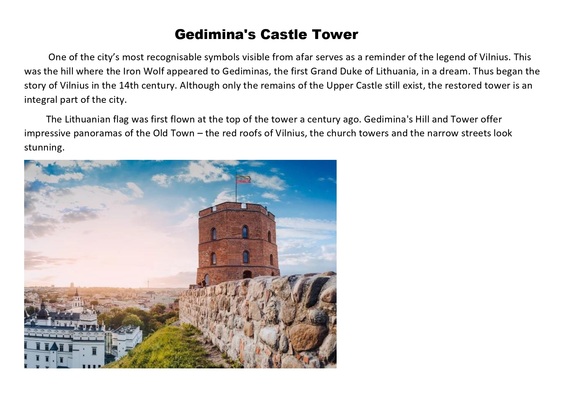
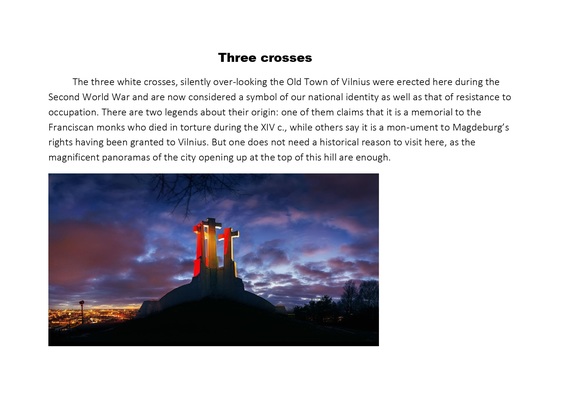
Liceul Tehnologic Octavian Goga Jibou, Romania
History CLIL no4 RO.docx
School: Liceul Tehnologic Octavian Goga Jibou, Romania
Age of students/Grade: 11 years old /5th grade
Level of English: A1-A2
Teacher(s): Melinda Nagy
Subject(s): English / History
Topic: The Royal Grandchildren
Competences: cultural awareness and expression, digital competence, initiative
Aims:
-to revise vocabulary related to family relationships and jobs
-to lean about the British royal family
-to be able to create a family tree
Teaching points
| Language | Content |
| official air-sea rescue helicopter soldier disabled | The British Royal Family |
Resources: internet connection, laptop/tablet/smarphone, Google Meet, online textbook
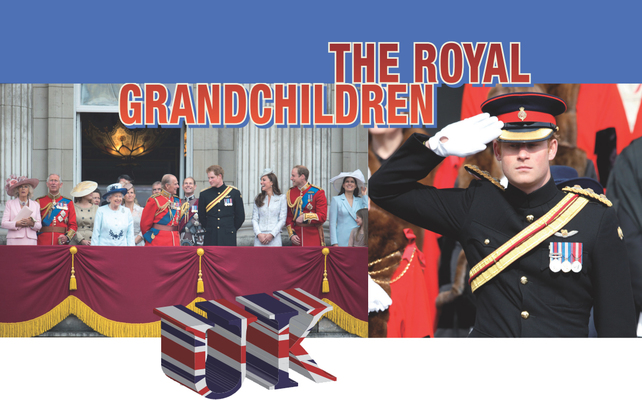
Description of the activities:
Activity 1: Discussions
Before students read the text, they discuss the following questions:
- What do you know about the British royal family?
- What is the name of the Queen?
- Who is the future King?
Activity 2: Reading and writing
Students read the first two paragraphs of the text and complete the family tree for the royal family.
The United Kingdom has got a royal family. Queen Elizabeth II is the head of the family. Her husband is Prince Phillip and they’ve got four children: Prince Charles, Princess Anne, Prince Andrew and Prince Edward. The Queen has got eight grandchildren and five great-grandchildren.
The royal grandchildren are: Prince Charles’s sons, William and Harry; Princess Anne’s son and daughter, Peter and Zara; Prince Andrew’s daughters, Beatrice and Eugenie, and Prince Edward’s daughter and son, Louise and James.
The British monarchy today is different from in the past. The young generation of royals have got very different lives from their parents and grandparents. Their lives are more similar to the lives of ordinary people: school, university and work. They’ve got jobs but they’re also members of the royal family, so they’re often at official occasions, too.
Prince William’s an air-sea rescue helicopter pilot. He’s also a future king and he’s often the Queen’s representative on official occasions. His wife is Kate Middleton and they’ve got two children, George and Charlotte. His brother, Prince Harry, is a soldier and a pilot. Harry is a very popular young man and his favourite sports are rugby and polo. He’s the organiser of the Invictus Games, a sports event similar to the Paralympics, for disabled soldiers.
William and Harry’s cousin, Zara Phillips, is a sports champion. Her sport is horse-riding and she’s got lots of medals from international competitions. She hasn’t got a royal title – she’s just Zara Phillips. Her husband is a sportsman, too. He’s Mike Tindall, a rugby player. They have a very normal life – in the world of sport! They’ve got a daughter called Mia.
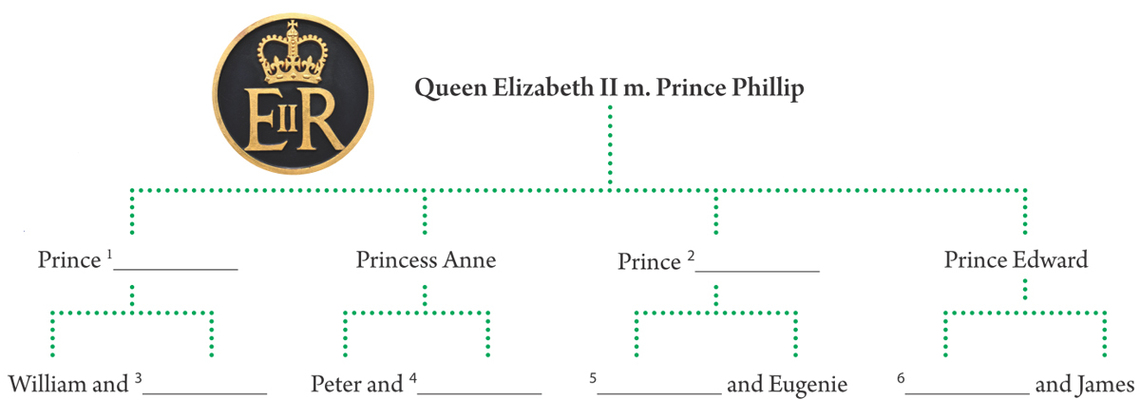
Activity 3: Reading and comprehension
Students continue to read the text and answer the questions:
1. What is the name of the Queen’s daughter?
2. What is Prince William’s job?
3. What is Prince Harry’s job?
4. Which are Prince Harry’s favourite sports?
5. Who is Zara Phillips?
6. What is her sport?
Activity 4: Project work
Find another royal family from Europe and create their family tree. Present it to the class.
HISTORY CLIL LESSONS 5
May 2021
School: Liceul Tehnologic Octavian Goga Jibou, Romania
Age of students/Grade: 11 years old /5th grade
Level of English: A1-A2
Teacher(s): Melinda Nagy
Subject(s): English / History
Topic: Famous Explorers
History CLIL no 5 RO.docx
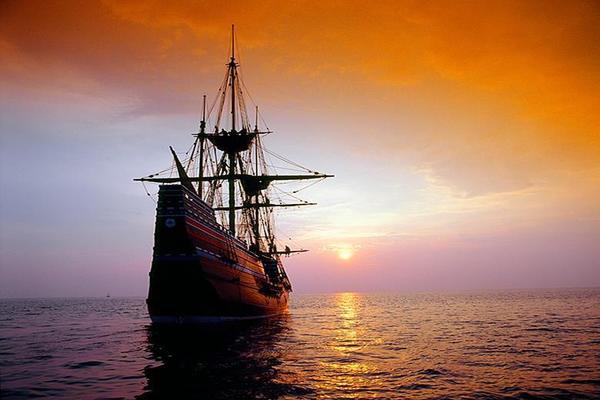
Source: VisionsofAmerica/ Joe Sohm, Getty Images
Aims:
-to find out about the lives and amazing achievements of famous explorers
-to enrich students’ vocabulary related to exploration, places and equipment
| Vocabulary | Teaching points |
| The North Pole The South Pole Pacific Ocean Arctic Circle Antarctic Circle space | Famous explorers James Cook Roald Amundsen Valentina Tereshkova |
Resources: internet connection, laptop/tablet/smarphone, Google Meet, online worksheets
Description of the activities
Activity 1: Introduction
Discusions about exploration with the pupils. T explains to them that much of the world has already been explored but there are still areas which we know very little about, like, for example, the oceans and space. T asks them to think about what kind of people explorers are. T explains that there have been many women explorers as well, although they are not usually as well known.
Activity 2: Warm-up
T shares a page with the following words: North Pole, Arctic Circle, the South Pole, Antarctic Circle, Pacific Ocean, space and the asks the pupils to imagine they are going to explore each of these places and asks them about the equipment they would need to take with them.
Explorers usually need to navigate: T asks thepupils if they know what explorers use to navigate (compass, map and, these days, GPS).
Activity 3: Reading and Comprehension
Pupils read the texts and match them to the pictures.
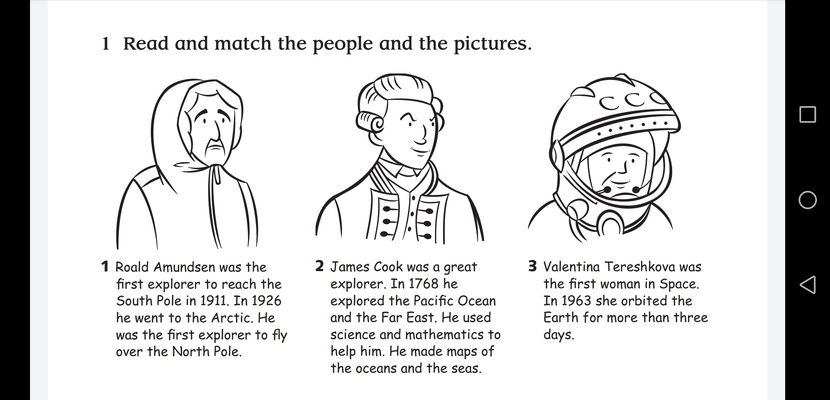
Activity 4: Reading and Comprehension
Pupils extract information from the texts and write it on the time line.
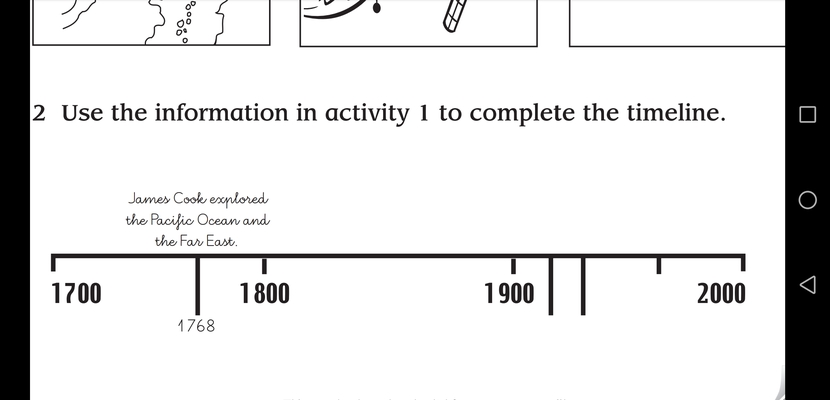
Activity 5: Project
Pupils research another famous person. They choose a century and find out how many famous people you know were born then they put them on a time line
School: Vilniaus Sausio 13-osios progimnazija, Lithuania
History_5_Lithuania.docx
Age of students/Grade: 11-12 years old /5th grade
Level of English: A1
Teachers: Ieva Kildušytė, Žana Šunina
Subject(s): English / History
Topic: The Greatest Inventions of XIX Century
Aims:
Teaching points:
| Language | Content |
- Invention
- Inventor
- Sewing machine
- Matches
- Typewriter
- Microphone
- Telegraph
- Traffic lights
- Roller coaster
- Diesel engine
- Barbed wire
| - The Industrial Revolution
- Inventions of the XIX century
|
Resources: internet connection, laptop/tablet/smartphone, Zoom platform.
Description of the activities:
Activity 1: To enrich vocabulary related to inventions.
- T directs Ss to the pictures (sewing machine, matches, typewriter, microphone, telegraph, traffic lights, roller coaster, diesel engine, barbed wire and others) and asks questions. Ss look at the pictures, answer the questions.
- T explains/elicits the meanings of any unknown words.
Activity 2: To learn about the greatest inventions and transportation methods created during the Industrial Revolution.
https://nevadainventors.org/30-inventions-1800s/
Activity 3: To develop research and ICT skills.
- Ss create digital posters about the greatest inventions of the XIX century using Canva (a graphic design platform). They search for information on the Internet.
